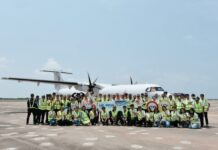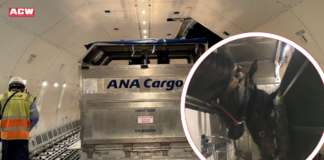

Coming on the back of the strong recovery following the pandemic, it appears that the airfreight logistics industry is again being buffeted by winds of change as it re-adjusts services in line with international restrictions and conditions imposed by the conflict in Europe.
Towards the end of 2021, it seemed that the sector was turning into favourable winds with economic indicators showing a strong recovery. However, within a very short space of time, the outlook has changed once again – passenger air travel is opening up and international air cargo must adjust to the new landscape.
Airfreight is a very attractive route for the transportation of goods. However, the sector is still struggling with the growing challenges surrounding the operations, including size volumes, available aircraft space and freight capacity, along with facility space, resourcing, handling and delivery.
It is now more critical than ever that airlines/forwarders/handlers have the correct volumes and dimensions to accompany the freight weighing data. In the challenge for available aircraft space, there has never been a greater demand for real time data, accuracy and optimisation of efficiencies. The power of real time data and the modernisation of processes through robotics and automation would immediately improve and benefit the air freight and air cargo industry, allowing it to become more efficient and recover ground lost to increasing costs and losses.
The industry is plagued with losses due to under-reported volumes in misdeclarations of air cargo. It relies on accuracy in the tracking, weight and dimensions of the goods being transported. The impact of getting these wrong increases costs, limits the stowage and the optimisation of loading. With an automated and fully autonomous robotic solution – that scans and photographically records every cargo while delivering a constant stream of highly accurate, live volume data – such issues would be easily eliminated. What is surprising is that such solutions are not being taken up faster by the sector – they are a reality and already delivering benefits to air freight logistics.
Less costly to implement than a complete overhaul of the entire fulfilment/warehouse operations or the building of a fully automated warehouse, Artificial Intelligence (AI), robots and automation present a variety of approaches and solutions. From quick and accurate scanning and dimensioning of any type of loads at inbound and outbound, to daily bond checking across shelves and various warehouse floor areas, with real time data feeds into the warehouse management systems. These systems are flexible, delivering improved productivity. They can be easily adapted to meet the changing market demands, building capacity to manage the increasing peaks and troughs, as well as the unplanned spikes. They also provide photographic evidence to support insurance claims and save thousands of pounds in hours of work by automating stock taking and inventory control to optimise space and increase efficiency.
British robotics and AI company BotsAndUs presents such a solution. BotsAndUs develops robotics and AI logistics solutions to drive better business decisions across operations. MIM, their fully autonomous mobile and modular robot measures, tracks and finds goods across storage and warehouses without workflow disruption and provides real time data at every stage of the process. The data is fed into digital twins, allowing freight logistics and warehouses to quickly respond to all the challenges they face on a daily basis.
As Oana Jinga, BotsAndUs co-Founder explained: “The airfreight and air cargo sectors are desperately in need of the benefits presented by automation, robotics and AI solutions. The demands for accuracy and agility can all be met with real-time data flows that allow them to reconfigure operations, adapt at speed and benefit from cost savings. With the automation of processes they can maintain accurate levels of inventory management and optimise the efficiencies along the chain. This would allow them to confidently meet the increasing and changing demands in the tracking, weight and dimensions of cargo and onward delivery with full control at every step of the process.”
She continued: “Automation, AI and the power of real time data deliver benefits right from the start of the acceptance process, as cargo is checked and assessed. Our fully autonomous state-of-the-art robotic system tracks and optimises operations and feeds this into digital twins. There is a continuous feed of real time insights, allowing for informed business decisions and improved financial returns. These solutions are affordable and they are available now. The air freight sector may not be able to control all the winds of change affecting its course, but it can control and manage the optimisation of its operations through real time data, automation and AI.”
A real life example of automation and AI working together in the airfreight sector is at Menzies cargo facility in Heathrow Airport. This serves as an innovation space for Menzies to foster a creative environment for the development of new technology, which will then be rolled out across its global network. Menzies confirmed that their new autonomous robot
Mimi, developed by BotsAndUs , tracks goods at every stage of the warehouse process, enhancing inventory management and slot utilisation.
The cargo facility and the autonomous robot was recently the focus of a show case event on the latest cargo technologies. Robert Fordree, Executive Vice President – World Cargo Services, Menzies Aviation said: “This initiative is designed to ensure Menzies remains at the forefront of the cargo industry. Digital capabilities are becoming increasingly critical for an industry with a need for speed as cargo volumes continue to rise.”










